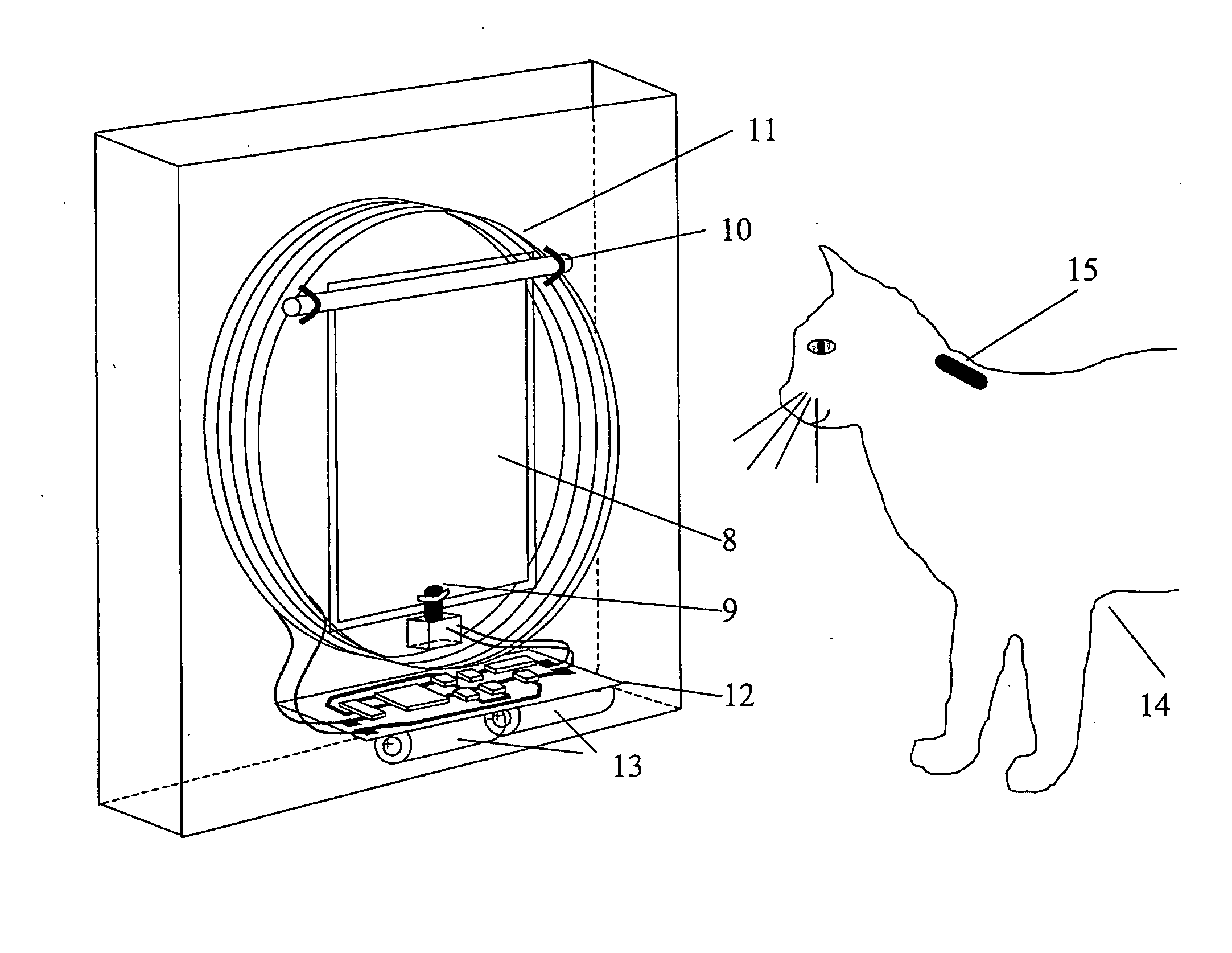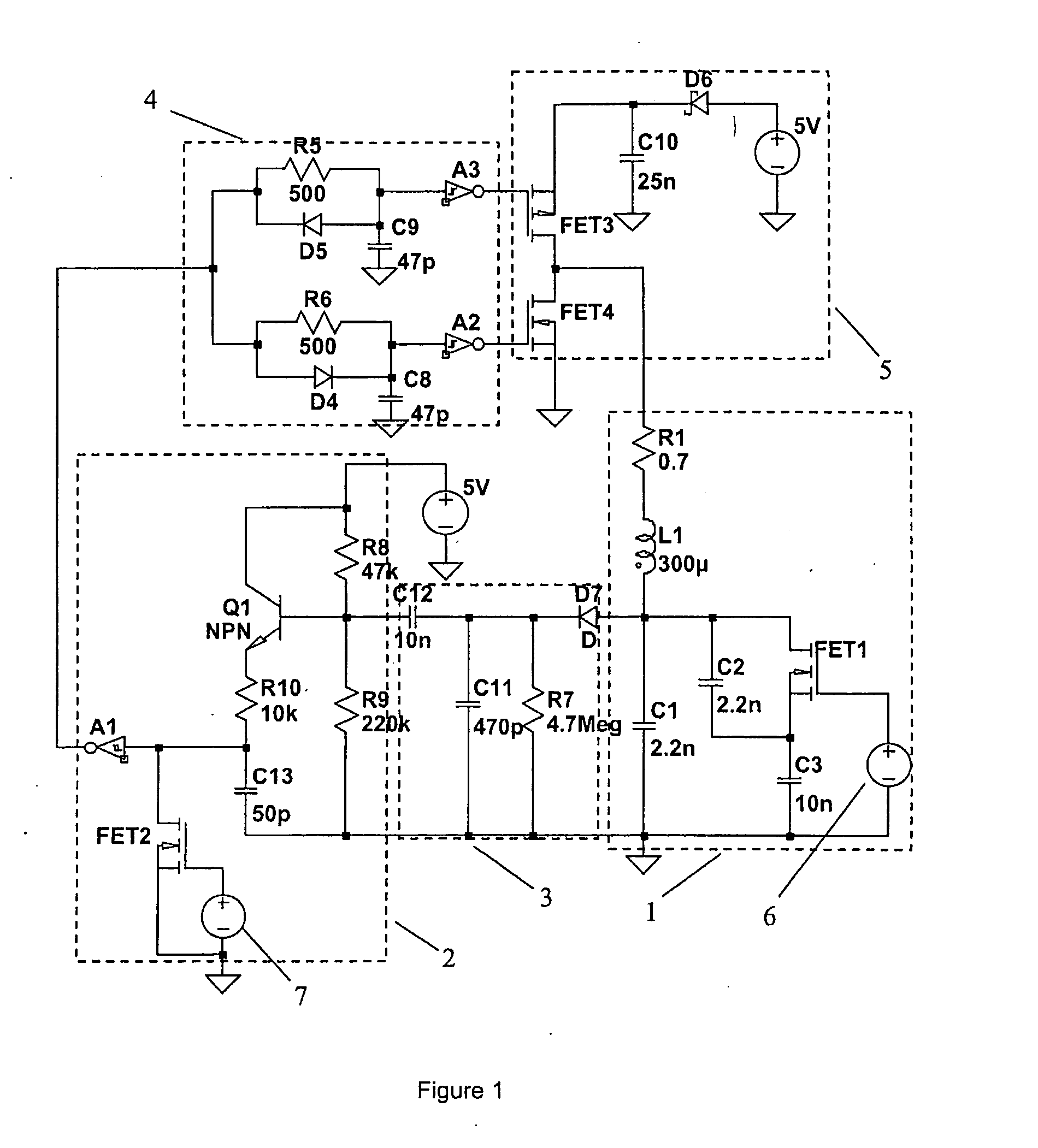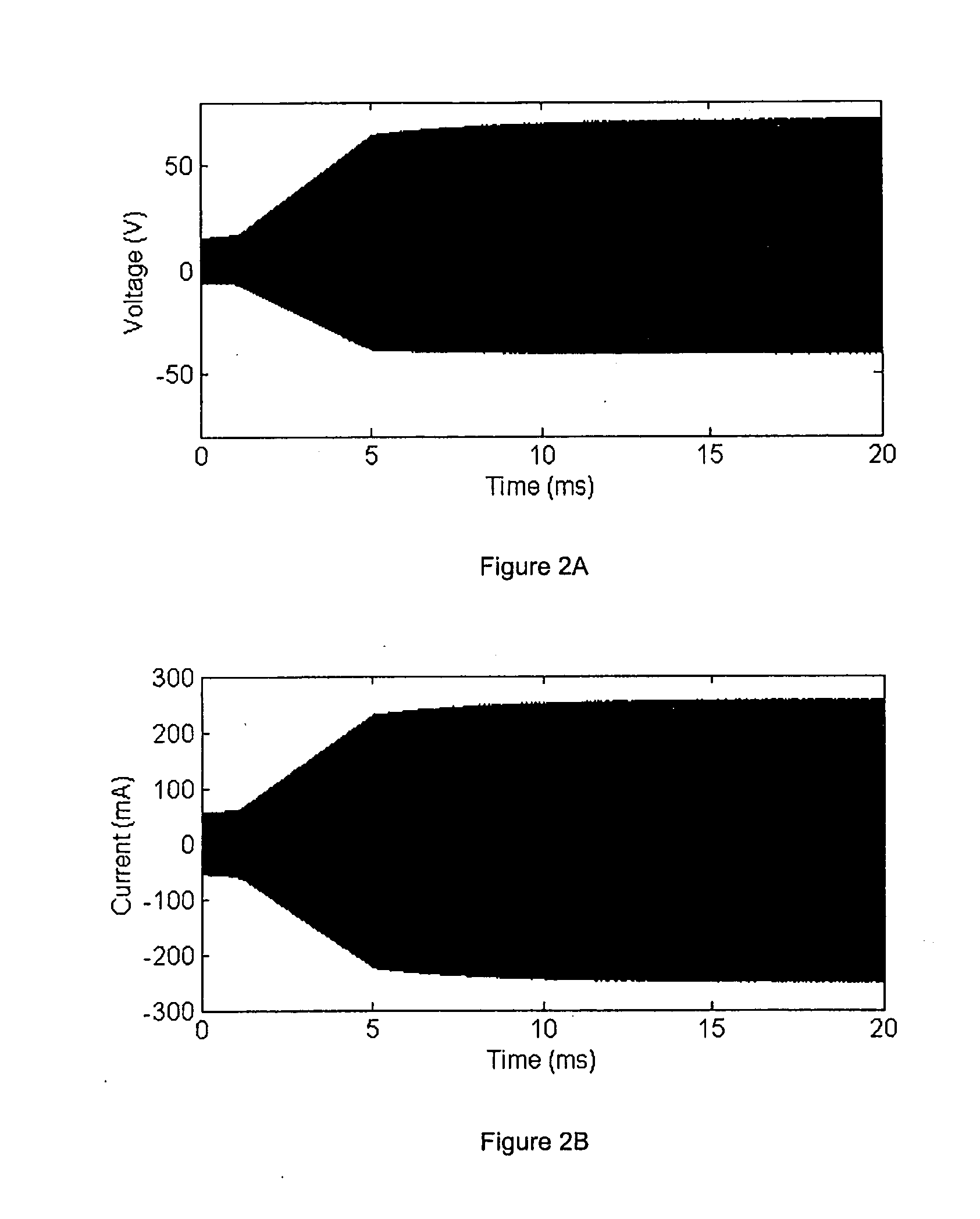RFID Reader
- Summary
- Abstract
- Description
- Claims
- Application Information
AI Technical Summary
Benefits of technology
Problems solved by technology
Method used
Image
Examples
first embodiment
[0047]The total energy supplied to the resonance is therefore a sensitive measure of the transponder modulation. FIG. 9 shows a schematic of the first embodiment with an additional section that measures current pulses though D6. A current measurement resistor R11 generates voltage spikes in response the diode current, which are capacitively coupled to ramp generator Q2. This generates a sawtooth waveform where the maximum voltage is mostly controlled by the duration of the current supply pulse. The maximum voltage is stored on C14 (less the Vbe drop of Q3), which also includes a decay resistor R16 such that this voltage may pickup both increasing and decreasing variations. Lastly Q4 provides gain and low pass filtering to reduce the amplitude of the ripple associated with the R16.
[0048]FIG. 10A shows the modulated transponder current and FIG. 10B shows the accompanying output voltage waveform, Vout. Vout provides an excellent measure of the modulation, especially exhibiting the diff...
fifth embodiment
[0070]FIG. 18 shows the invention. This embodiment comprises an antenna 16, reader 17, and lock 18 that is separably mounted on to a standard pet door 19. This has the advantage that the user does not need to replace a pet door that is already installed in their house, rather they may fix (retrofit) the external reader to the existing door. The external reader is mounted on the inside of the house and the lock prohibits the flap opening inwards when the desired pet is not registered; this prohibits unwanted animals from entering the house. The flap is free to open outwards, allowing exit to any animal in the house.
[0071]The antenna mounts onto or around the perimeter of the pet door or flap and the lock mounts at the base of the pet flap, either on the pet flap or on the door or wall in which the flap is provided. Any convenient mounting technique may be employed, for example, gluing, screwing or bolting. The lock is configured to be retrofitted to an existing pet door, in particula...
PUM
 Login to View More
Login to View More Abstract
Description
Claims
Application Information
 Login to View More
Login to View More - R&D
- Intellectual Property
- Life Sciences
- Materials
- Tech Scout
- Unparalleled Data Quality
- Higher Quality Content
- 60% Fewer Hallucinations
Browse by: Latest US Patents, China's latest patents, Technical Efficacy Thesaurus, Application Domain, Technology Topic, Popular Technical Reports.
© 2025 PatSnap. All rights reserved.Legal|Privacy policy|Modern Slavery Act Transparency Statement|Sitemap|About US| Contact US: help@patsnap.com



